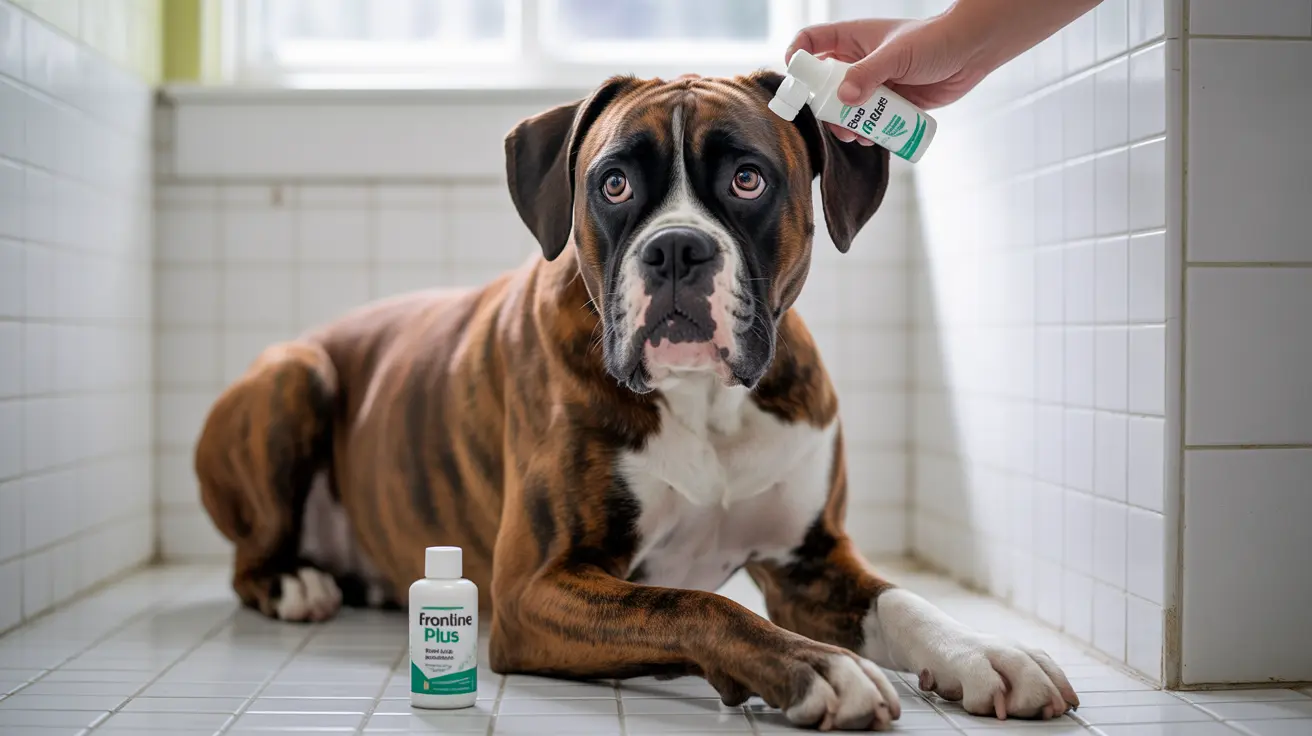How Frontline Plus Works: Understanding the Science
Frontline Plus employs a powerful dual-action formula featuring two key ingredients: fipronil and (S)-methoprene. Fipronil targets adult parasites by disrupting their nervous systems, while (S)-methoprene acts as an insect growth regulator to prevent flea eggs and larvae from developing. This combination provides comprehensive protection against both current infestations and future generations of fleas.
The medication spreads through your pet's natural oil glands, creating a protective layer that continues working for several weeks after application. Unlike some treatments, Frontline Plus kills parasites through contact, meaning fleas and ticks don't need to bite your pet to be eliminated.
Clinical Evidence and Effectiveness
Research demonstrates impressive efficacy rates for Frontline Plus. Clinical studies show up to 100% effectiveness against fleas within 24 hours of application, with protection lasting throughout the month. For ticks, the product maintains high efficacy rates against multiple species, including those that transmit Lyme disease and other serious infections.
Long-Term Protection and Durability
One of Frontline Plus's notable features is its waterproof formula. The product remains effective even after bathing or swimming, though pets should stay dry for 24 hours following application. Monthly treatments provide continuous protection, with some studies showing flea control extending up to three months.
Proper Application for Maximum Results
Success with Frontline Plus largely depends on correct application. The product should be applied directly to the skin at the base of the neck, where pets can't lick it. Dosing varies by species and weight, making it crucial to select the appropriate formulation for your pet's size.
Common Application Mistakes to Avoid
- Applying to wet fur
- Using the wrong dose for your pet's weight
- Allowing pets to swim within 24 hours of application
- Skipping monthly treatments
- Using dog formula on cats or vice versa
Addressing Treatment Concerns
While some pet owners report reduced effectiveness, scientific studies haven't confirmed widespread resistance to Frontline Plus. Most cases of perceived failure can be attributed to incorrect application, missed doses, or heavy environmental infestations requiring additional home treatment measures.
Environmental Management Tips
For optimal results, combine Frontline Plus with environmental control measures:
- Vacuum frequently, especially in areas where pets rest
- Wash pet bedding regularly in hot water
- Treat all household pets simultaneously
- Consider professional pest control for severe infestations
Safety and Side Effects
Frontline Plus has a strong safety profile when used as directed. It's approved for puppies and kittens from eight weeks of age and can be used on breeding, pregnant, and nursing animals. While rare, some pets may experience temporary skin irritation at the application site.
Frequently Asked Questions
How does Frontline Plus work to kill fleas and ticks on dogs and cats?
Frontline Plus uses fipronil to kill adult parasites by disrupting their nervous systems, while (S)-methoprene prevents flea eggs and larvae from developing. The solution spreads through the pet's natural oils, providing full-body protection through contact killing.
Can Frontline Plus prevent flea infestations by stopping the flea life cycle?
Yes, the (S)-methoprene in Frontline Plus specifically targets flea eggs and larvae, preventing them from maturing into adults. This breaks the flea life cycle and helps prevent reinfestation.
How often should I apply Frontline Plus to my pet for the best flea and tick protection?
Apply Frontline Plus monthly for consistent protection. While some flea control effects may last longer, monthly application ensures continuous protection against both fleas and ticks.
Is Frontline Plus effective if my dog or cat gets wet after application?
Yes, Frontline Plus remains effective after swimming or bathing, but pets should stay dry for 24 hours after application to ensure optimal distribution of the product.
Why might Frontline Plus seem less effective sometimes, and what can cause treatment failure?
Treatment failure usually results from incorrect application, missed doses, or heavy environmental infestations. Using the wrong dose, applying to wet fur, or not treating all household pets can also reduce effectiveness.






